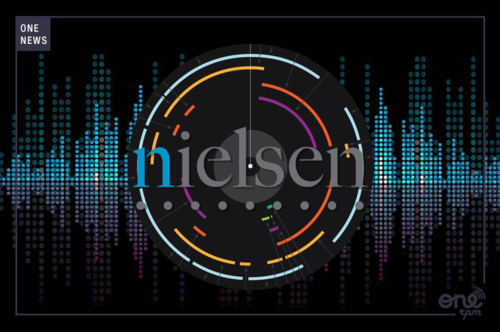
While digital streaming revenue growth continues to offset the decline in digital album and track sales, the music industry still has the same problem it has wrestled with for over a decade: physical music’s decline is outpacing digital’s growth.
As the industry has evolved from an album-based business model to a track-based one, and now from a download-based model to a streamed subscription model, music industry executives have created measurements for streaming and individual track downloads equivalent to the revenue produced by one album. Since the average blended wholesale cost of a single album produces about $7.50 in wholesale revenue to labels, the industry has created formulas for other configurations and formats to approximate that amount of revenue.
So when looking purely at mid-year digital sales – digital albums downloads plus digital tracks downloads whereby 10 track sales convert into one track equivalent album (TEA) unit – the U.S. industry generated digital sales of 113.2 million album units in 2014, a decline of 15.9 million units from the 129 million units tallied in the first half of 2013, according to Nielsen SoundScan.
AT-A-GLANCE
Total album sales (including digital, TEA & SEA): 227M (down from 235M)
Digital album sales (including TEA):113.2 million (down 15.9M)
Stream equivalent albums: 1,500 to 1 SEA, 46.9M total (up from 24.8M)
Most streamed track: Katy Perry, “Dark Horse”
Most spins at radio: Pharrell, “Happy”
Market share: UMG, 38.1% – Sony, 27.9% – Warner, 18.8% – Indies, 14.3%
Largest genre: Rock, 34.7% of sales
But in order to measure the growing streaming model, the industry has created something called the stream equivalent album (SEA), which multiplies the number of streams at the current stream pay rate to equal the average blended wholesale revenue of $7.50. So in 2013, when the average blended payout for audio and video streams was approximately $0.00375, or nearly four-tenths of a penny, 2,000 streams comprised one SEA unit. But this year, the average blended per-stream rate for audio and music videos is about $0.005, or one half a cent per stream so 1,500 streams equal one album unit this year.
So using the above formulas for the 70.3 billion audio and video interactive streams counted by Nielsen BDS in the first half of the year versus the 49.5 billion streams counted last year – and not counting passive streams from services like Pandora, iTunes Radio and Sirius – this year SEA units totaled 46.9 million units as compared with 24.8 million SEA units in 2013, a net gain of 22.1 million units.
That total outpaces the 15.9 million TEA album unit decline in the first half of the year, which shows that streaming revenue is outpacing the decline of overall download sales by 6.2 million album equivalent units.
But that growth is not large enough to offset the 15.6 million unit decline in physical album units when you take into account a 16.6 million decline in CD album sales and a one million unit net gain in album sales to 4 million units from 2.9 million units at the mid-year point in 2013.
“With On-Demand streams surpassing 70 billion songs in the first six months of 2014, streaming continues to be an increasingly significant portion of the music industry,” says David Bakula, SVP Nielsen Entertainment. “Streaming’s 42% year-over-year growth and Vinyl LP’s 40% increase over last year’s record-setting pace shows interest in buying and consuming music continues to be robust, with two very distinct segments of the industry expanding substantially."
But when looking at total album units including albums, track equivalent albums and streaming equivalent albums of 227 million units at mid-year versus about 235 million units at mid-year 2013, the industry is still looking at a decline of 8 million, or an overall drop of 3.3%.
So far this year, Katy Perry’s "Dark Horse” is the leading streaming track, picking up 65.4 million audio streams and another 122.8 million music video streams, for a combined total of 188.2 million streams. That is followed by John Legend’s “All Of Me, with a combined 144.7 million streams; and Jason Derulo’s "Talk Dirty,” with 142.5 million streams. Meanwhile, Pharrell Williams' "Happy" received the most radio airplay, racking up 571,000 spins.
Looking at label market share, UMG continues to lead the industry in overall album plus TEA, growing its share to 38.1%. UMG is followed by Sony Music Entertainment at 27.9%, the Warner Music Group with 18.8%, and the independent sector collectively at 14.3%, as calculated by Nielsen SoundScan. But those rankings are based on which company is distributing music; if market share is calculated by ownership, the independent sectors share increases significantly. Billboard will present updated market share numbers by ownership within a few days.
Meanwhile, looking at sales by genre: R&B/hip-hop is down 19.1% to 18.4 million units; latin is down 20.1% to 3.3 million units; country is down 21.7% to 14 million units and suffered larger album sales declines than the overall U.S. market’s decline of 14.5%; and rock only decreased by 12.8% to 42 million units, showing the strongest performance of the large egress. Other genres like pop and Christian/Gospel straddled the market’s decline, falling 15.7% to 9.4 million units and 15.1% 8 million units, respectively.
Overall rock remains the largest genre, comprising 34.7% of U.S. album sales, while R&B/hip-hop is second with 15.3%; and country is the third largest with 12.2%.
Even though download stores suffered a dramatic decrease, with album downloads falling 11.5% to 53.8 million units, the store sector still increased its overall market share to 44.5% of album sales, up from 42.8% in the mid-year point in 2013. That’s because chains and mass merchants suffered larger declines, respectively falling by 25.9% to 14.3 million; and 22.3% to 28 million.
Consequently, chain stores now comprise 11.8% of album sales; mass merchants 23.2%; download stores 44.5%; non-traditional CD merchants, including Amazon, non-music oriented businesses like Starbucks and live venue sales comprise 13.3% of sales; while independent stores now comprise 7.3% of album sales.
